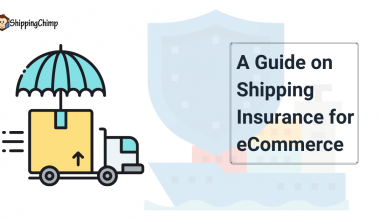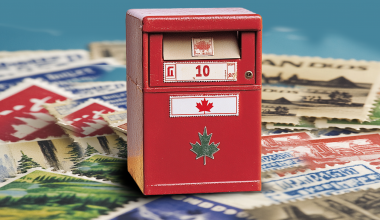Imagine orders stacking up, customer complaints rising, and Canada Post grinding to a halt just days before Christmas. The problem is that it is not an imaginary scenario, as the current postal strikes during Christmas make this a reality for thousands of D2C brands. It could lead to devastation across Canada’s retail industry if not handled properly, which means a Canada Post strike contingency must be the focus.
Therefore, to help D2C brands continue to fight the good fight and keep their businesses running, this article provides a clear framework to deal with holiday shipping disruption. The current strike landscape will be discussed, and proper plans will be outlined. A readiness checklist will also be provided, along with case studies showing that these strategies work effectively.
Current Canada Post Strike Situation & Trends
The entire battle between Canada Post and the Canadian Union of Postal Workers comes down to the labor dispute originating in 2024 to 2025. The latest phase of the strike began on September 25, following failed negotiations over working conditions, wages, job security, and a government-backed plan to reduce door-to-door delivery and close rural post offices.
Historically, postal labour protests have lasted from weeks to over a month, and recovery often takes even longer. As a result, D2C brands relying on Canada Post for holiday fulfillment are now uncertain about what comes next. If the delays continue, they could stretch past Christmas, causing serious harm to sales, returns, and customer satisfaction.
However, this year’s strikes are somewhat different. According to CityNews, as of October 9, 2025, the Canada Post union has switched from countrywide to rotating strikes, which means it is possible that this time, the disruptions may not cause the same level of issues as last year.
Why Holiday Season is Especially Risky for D2C Fulfillment
The holiday season is the most critical revenue window for Canadian D2C brands. During this time, order volumes peak between Black Friday and Christmas Eve. As a result, even a small shipping slowdown can cause a chain reaction, impacting fulfillment systems that are already operating at capacity. When Canada Post faced the same challenges last year, parcel processing delays reached up to three weeks, causing thousands of unshipped orders to pile up in regional depots.
These external misfires lead to internal breakdowns within the business. A postal strike floods customer support channels with multiple tracking inquiries, return requests, and refund claims. Re-fulfillment through alternative carriers puts double pressure on shipping costs, which cuts into margins and causes profits to bleed. Canada Post disruptions in 2018 and 2024 caused support ticket volumes to increase by 200 to 300 percent, resulting in January return rates surging well above normal levels.
Key Canada Post Strike Contingency Plans for D2C Brands
Below are core strategies brands should plan ahead for. You can mix and match according to scale, budget, and geography.
Diversify Carrier Mix & Use Regional/Local Couriers
Relying only on Canada Post during peak season is a major operational risk. D2C brands should focus on diversifying their options and select carriers such as Purolator, FedEx, UPS, Canpar, or Intelcom. If they seek faster urban deliveries, they should also consider exploring regional couriers like Chit Chats or FleetOptics.
These carriers often maintain service even during postal disruptions. Platforms such as ShippingChimp and ShipStation can help automate label routing to the most efficient carrier per region, balancing cost and delivery speed.
Hybrid Fulfilment / Multiple Warehouses
Brands with high sales volumes can reduce exposure to failures that emerge from a single network by dividing their fulfillment between multiple nodes. For instance, partnering with 3PL providers or using hybrid fulfillment (a mix of in-house and outsourced operations) allows parcels to move through whichever logistics network remains functional.
Strategically placing inventory across eastern and western warehouses minimizes cross-country shipping dependencies and ensures regional resilience during strikes or weather events.
Inventory & Buffer Stock Planning
During strike-prone periods, it is wise to maintain buffer stock near top customer zones, as it helps make up the difference between meeting or missing Christmas delivery windows. For smaller brands, this might mean pre-positioning inventory at third-party fulfillment centers or leveraging dark stores for last-mile dispatch.
Overstocking select SKUs with predictable holiday demand also reduces fulfillment lag. Data-driven forecasting tools such as Cin7, SkuVault, or DEAR Systems can help estimate optimal safety stock levels.
Cutoff Deadlines, Customer Communication & Expectation Setting
Transparency goes a long way when shipping systems face disruption. If customers are updated early about holiday order cutoffs and delivery delays, they are more likely to trust the carrier and, in some cases, even extend their timelines.
Platforms should therefore post banners on websites, send proactive email updates, and offer express shipping upgrades through alternative carriers to prevent backlash. Many D2C brands have also introduced “buy now, ship later” incentives to make customers feel more valued even during protest seasons.
During the 2024 strike, brands that communicated cutoff deadlines clearly retained higher post-holiday satisfaction scores.
Canada Post Strike Contingency for Communication & Customer Experience
How brands communicate during a postal strike can define whether customers stay loyal or walk away. The following checklist-style tactics help maintain trust and control expectations:
- Be Transparent Everywhere: Add banners to your homepage, cart, and checkout pages explaining possible postal delays. Make sure that help pages and order tracking portals are updated daily.
- Proactive Messaging: Always send preemptive updates such as “Due to postal service disruptions, some orders may take an extra 2 to 5 days to arrive.” Make things clear to the customers early to prevent frustration later.
- Offer Flexible Delivery Options: Turn on express upgrades, locker pickups, or local courier delivery to give customers alternative fulfillment routes during delays.
- Create a Strike Update Page: A dedicated landing page for delivery updates, FAQs, and expected timelines centralizes all information and reduces inbound queries.
- Lead with Empathy: Acknowledge inconvenience openly. In return for the disruption, offer discount codes, free expedited shipping, or loyalty points. This helps offset frustration and preserve goodwill.
- Train Support Staff: Tempers run high when orders are delayed, so train support teams thoroughly. Provide clear customer service scripts for common questions like “Where is my order?” and set up escalation workflows to resolve priority cases quickly.
- Monitor Feedback in Real Time: Track sentiment across social media and customer emails, and respond promptly. Public transparency helps turn a negative situation into proof of reliability.
FAQ
What if the strike ends early?
If negotiations resolve sooner than expected, Canada Post usually resumes operations in phases, starting with priority mail and express parcels. However, backlogs can persist for 7–14 days, so brands should maintain contingency carrier use until service normalizes.
Can I partially use Canada Post for less critical SKUs?
Yes. Many D2C brands split fulfillment by urgency, using Canada Post for low-priority or non-gift items, while routing high-value or time-sensitive products through couriers like Purolator or UPS. This hybrid strategy balances cost efficiency and delivery reliability.
How to estimate additional cost impact?
Calculate a weighted average of your alternate carrier rates, factoring in regional coverage and express surcharges. During previous strikes, D2C brands reported 15–25% higher fulfillment costs due to express rerouting and added labor.
How to protect customer trust during delays?
Transparency and empathy are key. Proactively communicate delays, provide tracking updates, and offer goodwill gestures such as discounts or free shipping upgrades. Consistent honesty often retains more customers than overpromising delivery times. Switch to carrier like ShippingChimp which keeps your orders flowing.
- Holiday Shipping Deadlines 2025: When to Ship for On-Time Christmas Delivery - December 3, 2025
- Best Shipping Software for Canadian D2C Brands - November 25, 2025
- Why Affordable Express Shipping Feels Impossible During the Holidays? - November 19, 2025






